#Theda Gilbert
Photo

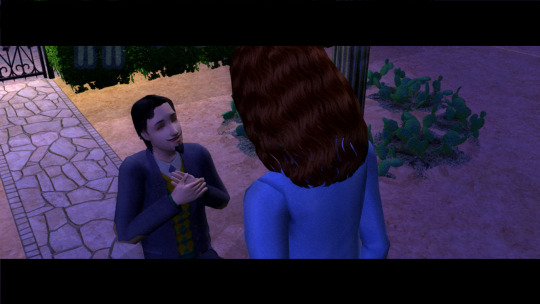
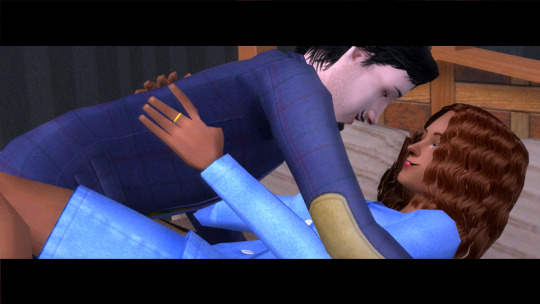



Moving on to MESA FLATS!
Rachel Ware is 3 bolting with Julian Cooke. They went on a date, he moved in, they got married and he is calling it a dream date... WELL I HOPE SO BECAUSE YOU MARRIED HER
That said, they are expecting a child.
Meanwhile were Theda Gilbert out there playing and flirting with any man coming by... so Sanjay Ramaswami and Vincent Moore. No children expected as far as I remember. But I cannot say for the future where she’ll go. She was actually going pretty well with Vincent in terms of bolts.
#ts2#the sims 2#the sims#sims#mesa flats#bitville#riverblossom hills#desiderata valley#julian cooke#sanjay ramaswami#rachel ware#theda gilbert#vincent moore#nanoplaysuber#uberhood
3 notes
·
View notes
Photo

Picture Play, March 1928
#don alvarado#rudolph valentino#john gilbert#ronald colman#virginia bradford#frank j. marion#janet gaynor#lillian gish#maria corda#greta garbo#theda bara#dolores del rio#vilma banky#gloria swanson#buster keaton#sydney chaplin#thomas meighan#viola dana#conrad veidt#emil jannings#phyllis haver#magazine: picture play#year: 1928#decade: 1920s#type: fan mail#pp vol. 28 no. 1
62 notes
·
View notes
Text
Tag: Character Inspiration
This is the last tag on my to do list. I'll have to recheck the notes but I think this about wraps it up thus far. It’s also the one I took the longest to complete…
Thank you so much @axl-ul for the tag. You can find their wonderful post here!
Gently Tagging: @rmgrey-author, @kaatiba, @girlfromthecrypt, @hyba, @coffeewritesfiction and an open tag for anyone else who would like to participate!
Rules: Pick a character(s) from your wip(s) and tell who they were inspired by or from.
Ok! So I had to go digging through some old files for this tag. All of the main characters in the Festival project started out as voices for news articles to develop the world of Hollow Grove. All of them and the world itself have changed a lot since their initial conception in late 2016. One day I may share those early character sketches.
But now to the tag proper!
Mariela: Visually, I drew a lot of inspiration from Eryn Allen Kane and Jessica Williams. The inspiration for her personality is a lot harder to pin down for me. I drew a lot of her interests and beliefs from my own but she's also fearless, sarcastic, and does not take any shit. I think of Nellie Bly and Ida B. Wells—she looks up to as heroes in her profession. I'm going to get a little deep and say she initially gave voice to some feelings I had about the world circa 2016 but she's not just that anymore.
September: Visually, the actors Gilbert Roland with a sprinkling of Ramon Novarro. Cecil Palmer's character in Welcome to Night Vale is baked somewhere deep in September's DNA. I'll also reveal my inner Whovian and admit that his character was very much inspired by The Doctor (particularly a mix of the Tennant (circa Donna Noble) and Capaldi eras), though replace their energetic eccentricity with that of a mild mannered, dry humored professor and you have September. At least on the surface. He's a mess beneath it all.
Hero: Out of all the characters, Hero is the character I put a lot of myself in personality wise, especially as I was right after college. As an intern at the in-universe newspaper, he gave a lot of voice to the ennui of finding your way in adult life mixed with dry humor and a hint of fatalism. After years of character development, he's not just that anymore but that is still a key component of his character. Visually, the best approximation I could find is Mackenyu as he appears in Chihayafuru.
Emery: Emery is also a response to some feelings I had about the world in 2016. Someone who, on the surface, is very salt of the earth--telling things as they are whether or not you like to hear it--but deep down is frustrated and put upon like everyone else, and has very different conclusions about it. There's definitely an injection of Ron Swanson from Parks & Rec in his character but he also comes off as the straight man in whatever wacky scenario I put him in. Visually, he's a mix of a younger, close shaven Zach Gallifinakis and Jesse Plemons.
Regina: Regina's look is very much inspired by the old vamps of Hollywood like Theda Bara (and some heavy doses of Zoey Deschanel) with some of Morticia Adams macabre sensibilities. She has a touch of quirky eccentricity that I drew from Regina Spektor's music, particularly "Pavlov's Daughter." She's daring and histrionic--a perfect mishmash of qualities. A mystery even to myself until recently.
#tag games#tagged!#character inspiration tag#festival project#oc: mariela#oc: September#oc: hero#oc: regina#oc: emery#writeblr#tumblr writing community
14 notes
·
View notes
Text
A Terrific New Book About Lupe Velez
Great news! Today is the pub date for Eve Golden’s new book Strictly Dynamite: The Sensational Life of Lupe Velez. Fans know the high marks set by Eve’s earlier works on Jean Harlow, Theda Bara, Anna Held, Vernon and Irene Castle, John Gilbert, Jayne Mansfield, and Kay Kendall. Hers is just the right touch for a topic as glamorous and tragic (and mythologized) as the Lupe Velez story.
Even…
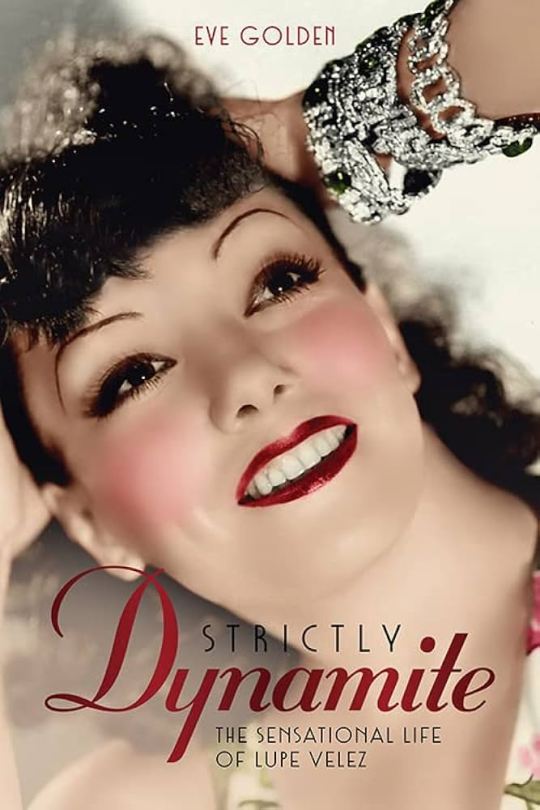
View On WordPress
3 notes
·
View notes
Text
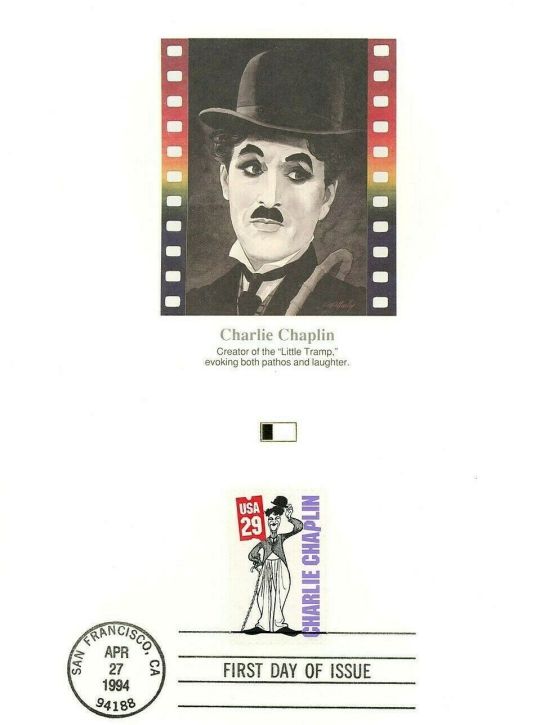

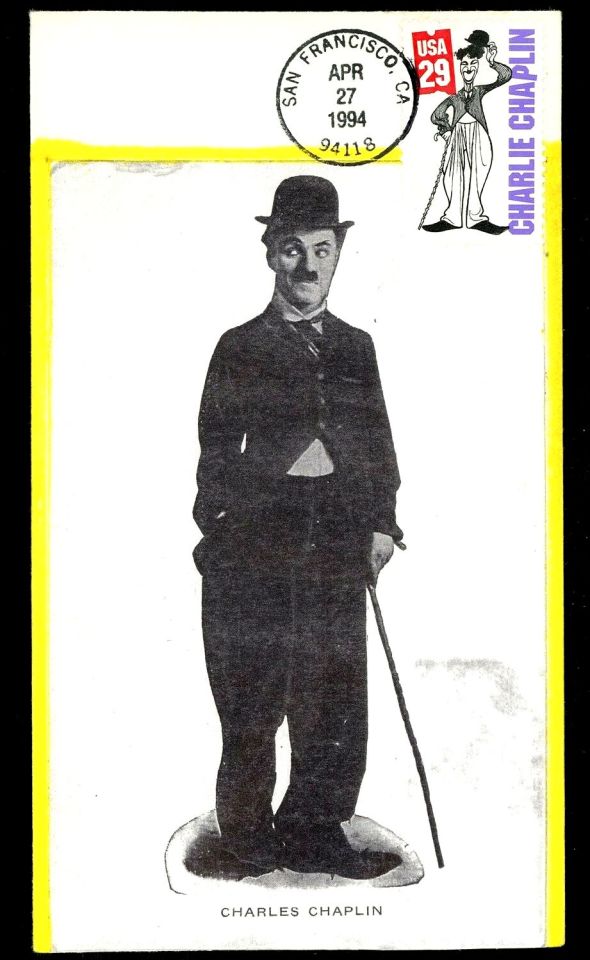



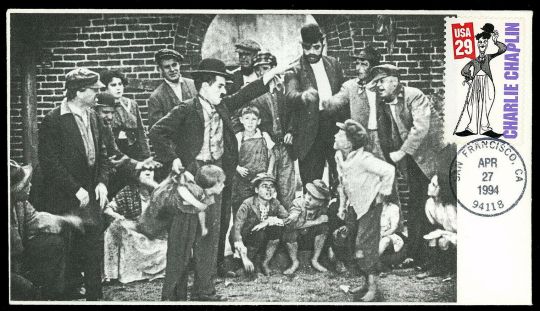

On April 27th 1994, the United States Postal Service issued stamps commemorating “Legends of the Silent Screen”, designed by renowned caricaturist Al Hirschfeld.
Honored along with Charlie Chaplin: Rudolph Valentino, Clara Bow, Lon Chaney, John Gilbert, Zasu Pitts, Harold Lloyd, Keystone Cops, Theda Bara and Buster Keaton - artist creating stamps is Al Hirschfeld.
Chaplin films pictured - "The New Janitor" 1914, "The Kid" 1921 & "The Gold Rush" 1925.
2 notes
·
View notes
Photo





Mesa Flats rotation Week 1 : Theda Gilbert
Theda’s backstory is basically “We made the most boring sim we could, can you be bothered to play her anyway?”
She looks boring, she has no part in the scenario, she doesn’t even own a pet or a house.
Okay, let’s move her in!
#PSN002W1#Theda Gilbert#Mesa Flats#Midnight Masquerade#52 Newland Avenue#Jonathan Kimbrell#The Sims Pet Stories#Pet Stories#TSPS#PSN002Gilbert
11 notes
·
View notes
Photo
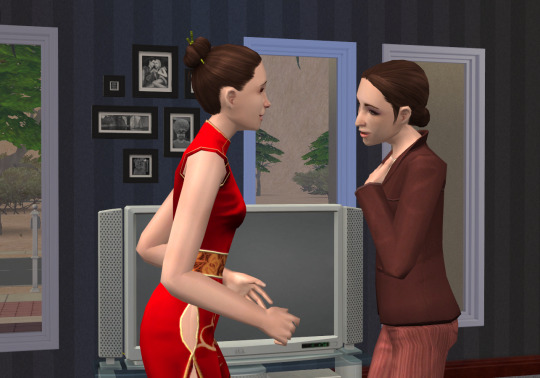
Right away Julianne sets out to win friends, starting out with Theda Gilbert.
1 note
·
View note
Text
In remembrance of Clara Bow, who passed away on this day, September 27th, 1965 🖤🖤
PART TWO
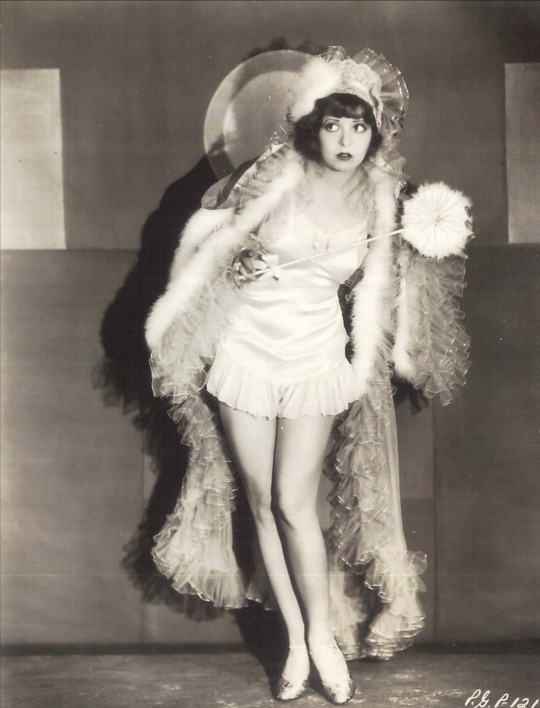
Clara Bow in Three Week Ends (1928)
DID YOU KNOW?...
-Clara Bow has a Star on the Walk of Fame
Her star was received on February 8th, 1960. At 1500 Vine Street.

-Before she was known as "The It Girl", she was known as "The Brooklyn Bonfire".
After a rough upbringing, Bow made her film debut in 1922 after winning a small role in a magazine contest. By the time “It” premiered in 1927, Bow was already a successful silent film actress, known to some as “the Brooklyn bonfire.”
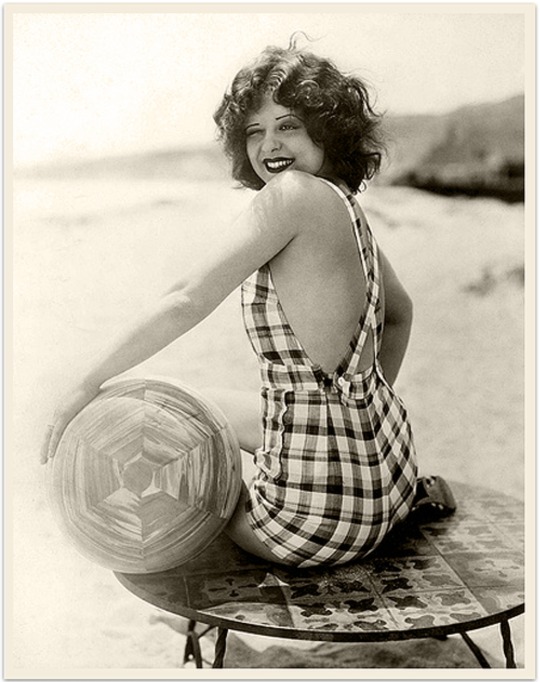
"The Brooklyn Bonfire"
-Clara has two sons, by Rex Bell: Rex Bell Jr. (b. 1934) and George Robert (b. 1938).
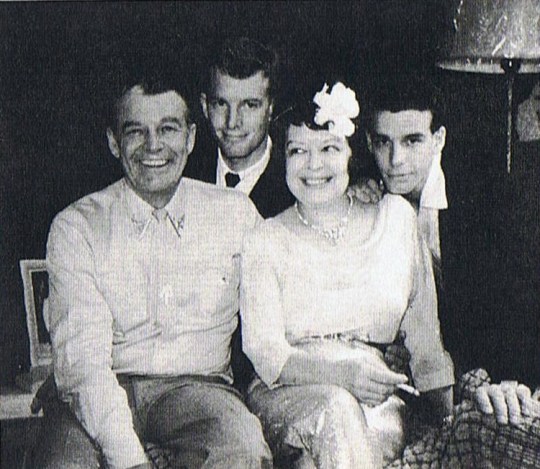
Clara Bow, aged 55, at a family reunion with her husband, George Beldam, and her two sons Tony Beldam and George Beldam, Jr. (1960)
-She lived in a seven-room bungalow at 512 N. Bedford Dr. in Beverly Hills at one point. She also lived in a Spanish-style house on Hollywood Blvd. between 1925 and 1927, and her last home was on Aneta Street in Culver City. She reportedly preferred playing poker with her cook, maid, and chauffeur over attending her movie premieres. Some of the properties in question are shown in Hollywood Mouth 2 (2014), whose director, Jordan Mohr lived near the Culver City property as a child and recognized the name of the street while reading David Stenn's biography of the actress.

Clara Bow's Malibu Beach House
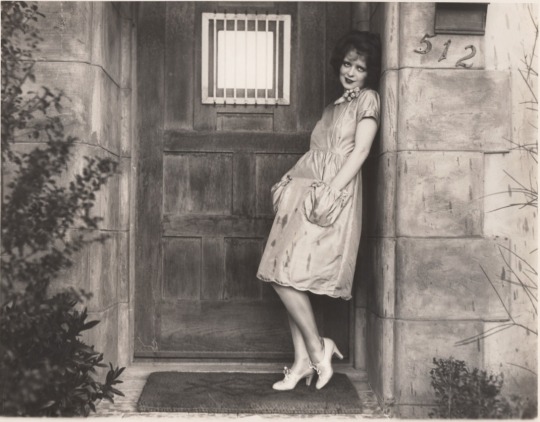
Clara Bow in the doorway of her home at 512 N. Bedford Dr.
-She worked at a hot dog stand on Coney Island as a teenager, run by a man named Nathan Handwerker, who later founded Nathan's Franks. However, contrary to legend, she was not discovered there.

Nathan's counter (Courtesy of Nathan's)
-Clara Bow was pictured on one of ten 29¢ US commemorative postage stamps celebrating stars of the silent screen, issued 27 April 1994. Designed by caricaturist Al Hirschfeld, this set of stamps also honored Rudolph Valentino, Charles Chaplin, Lon Chaney, John Gilbert, Zasu Pitts, Harold Lloyd, Theda Bara, Buster Keaton, and the Keystone Kops.

-She was a WAMPAS Baby Star of 1924.
The WAMPAS Baby Stars was a promotional campaign sponsored by the United States Western Association of Motion Picture Advertisers, which honored 13 (15 in 1932) young actresses each year whom they believed to be on the threshold of movie stardom. The campaign ran from 1922 to 1934, except for 1930 and 1933.

Clara Bow pictured in the front, far left.
-After her death there were rumors that she had faked her death, and some had reported seeing her visiting her own grave, at Forest Lawn, Glendale (Freedom Mausoleum, Sanctuary of Heritage), where she is interred next to George Burns and Gracie Allen.

Clara Bow's grave.
🖤🖤🖤
Sources: IMDb.com
wikipedia.com
#clara bow#clara bow history#the life of clara bow#vintagephotos#vintagewomen#vintagefashion#vintage hollywood#vintage films#vintage cinema#vintage Hollywood#vintage celebrity photos#1920s hollywood#1920sfashion#1920s silent film stars#1930smovies#1930s actresses#old hollywood#old hollywood stars#old movies#old films#1930s cinema#1930s celebrity photos#1930s celebrity history#classicfilms#classic Hollywood#1920s celebrity photos#Hollywood glamour#1920s cinema#in rememberance of clara bow#1920s movie history
20 notes
·
View notes
Photo
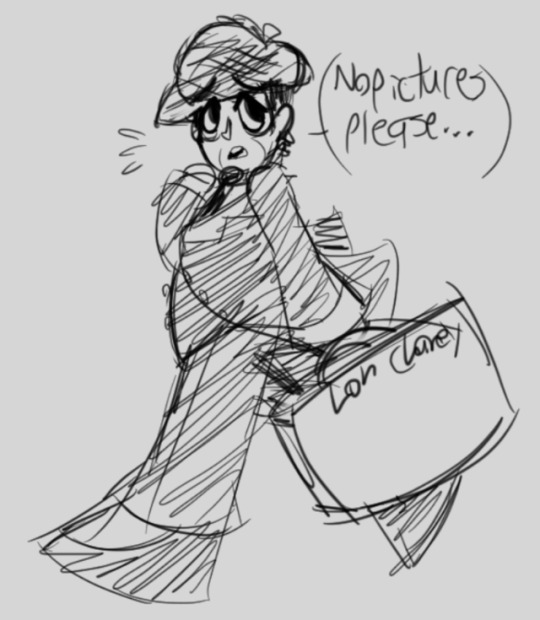



Bleh
—
Twitter
Pixiv (contains NSFW content)
Instagram
Deviantart
#i tried a cartoony style but i don't think it worked#Lon Chaney#john gilbert#buster keaton#theda bara#theda bara doesn't fit because she's a 10's star pre-mgm but fuck it i love her and she deserves love#the theme is cartoon-y style silent stars#probably gonna do more#glitterclamopera#glitterclam the dork#art#silent film#1920s#1910s
6 notes
·
View notes
Text

Ida Estelle Taylor (May 20, 1894 – April 15, 1958) was an American actress, singer, model, and animal rights activist. With "dark-brown, almost black hair and brown eyes," she was regarded as one of the most beautiful silent film stars of the 1920s.
After her stage debut in 1919, Taylor began appearing in small roles in World and Vitagraph films. She achieved her first notable success with While New York Sleeps (1920), in which she played three different roles, including a "vamp." She was a contract player of Fox Film Corporation and, later, Paramount Pictures, but for the majority of her career she freelanced. She became famous and was commended by critics for her portrayals of historical women in important films: Miriam in The Ten Commandments (1923), Mary, Queen of Scots in Dorothy Vernon of Haddon Hall (1924), and Lucrezia Borgia in Don Juan (1926).
Although she made a successful transition to sound films, she retired from film acting in 1932 and decided to focus entirely on her singing career. She was also active in animal welfare before her death from cancer in 1958. She was posthumously honored in 1960 with a star on the Hollywood Walk of Fame in the motion pictures category.
Ida Estelle Taylor was born on May 20, 1894 in Wilmington, Delaware. Her father, Harry D. Taylor (born 1871), was born in Harrington, Delaware. Her mother, Ida LaBertha "Bertha" Barrett (November 29, 1874 – August 25, 1965), was born in Easton, Pennsylvania, and later worked as a freelance makeup artist. The Taylors had another daughter, Helen (May 19, 1898 – December 22, 1990), who also became an actress. According to the 1900 census, the family lived in a rented house at 805 Washington Street in Wilmington. In 1903, Ida LaBertha was granted a divorce from Harry on the ground of nonsupport; the following year, she married a cooper named Fred T. Krech.[9] Ida LaBertha's third husband was Harry J. Boylan, a vaudevillian.
Taylor was raised by her maternal grandparents, Charles Christopher Barrett and Ida Lauber Barrett. Charles Barrett ran a piano store in Wilmington, and Taylor studied piano. Her childhood ambition was to become a stage actress, but her grandparents initially disapproved of her theatrical aspirations. When she was ten years old she sang the role of "Buttercup" in a benefit performance of the opera H.M.S. Pinafore in Wilmington. She attended high school but dropped out because she refused to apologize after a troublesome classmate caused her to spill ink from her inkwell on the floor. In 1911, she married bank cashier Kenneth M. Peacock. The couple remained together for five years until Taylor decided to become an actress. She soon found work as an artists' model, posing for Howard Pyle, Harvey Dunn, Leslie Thrasher, and other painters and illustrators.
In April 1918, Taylor moved to New York City to study acting at the Sargent Dramatic School. She worked as a hat model for a wholesale millinery store to earn money for her tuition and living expenses. At Sargent Dramatic School, she wrote and performed one-act plays, studied voice inflection and diction, and was noticed by a singing teacher named Mr. Samoiloff who thought her voice was suitable for opera. Samoiloff gave Taylor singing lessons on a contingent basis and, within several months, recommended her to theatrical manager Henry Wilson Savage for a part in the musical Lady Billy. She auditioned for Savage and he offered her work as an understudy to the actress who had the second role in the musical. At the same time, playwright George V. Hobart offered her a role as a "comedy vamp" in his play Come-On, Charlie, and Taylor, who had no experience in stage musicals, preferred the non-musical role and accepted Hobart's offer.
Taylor made her Broadway stage début in George V. Hobart's Come-On, Charlie, which opened on April 8, 1919 at 48th Street Theatre in New York City. The story was about a shoe clerk who has a dream in which he inherits one million dollars and must make another million within six months. It was not a great success and closed after sixteen weeks. Taylor, the only person in the play who wore red beads, was praised by a New York City critic who wrote, "The only point of interest in the show was the girl with the red beads." During the play's run, producer Adolph Klauber saw Taylor's performance and said to the play's leading actress Aimee Lee Dennis: "You know, I think Miss Taylor should go into motion pictures. That's where her greatest future lies. Her dark eyes would screen excellently." Dennis told Taylor what Klauber said, and Taylor began looking for work in films. With the help of J. Gordon Edwards, she got a small role in the film A Broadway Saint (1919). She was hired by the Vitagraph Company for a role with Corinne Griffith in The Tower of Jewels (1920), and also played William Farnum's leading lady in The Adventurer (1920) for the Fox Film Corporation.
One of Taylor's early successes was in 1920 in Fox's While New York Sleeps with Marc McDermott. Charles Brabin directed the film, and Taylor and McDermott play three sets of characters in different time periods. This film was lost for decades, but has been recently discovered and screened at a film festival in Los Angeles. Her next film for Fox, Blind Wives (1920), was based on Edward Knoblock's play My Lady's Dress and reteamed her with director Brabin and co-star McDermott. William Fox then sent her to Fox Film's Hollywood studios to play a supporting role in a Tom Mix film. Just before she boarded the train for Hollywood, Brabin gave her some advice: "Don't think of supporting Mix in that play. Don't play in program pictures. Never play anything but specials. Mr. Fox is about to put on Monte Cristo. You should play the part of Mercedes. Concentrate on that role and when you get to Los Angeles, see that you play it."
Taylor traveled with her mother, her canary bird, and her bull terrier, Winkle. She was excited about playing Mercedes and reread Alexandre Dumas' The Count of Monte Cristo on the train. When she arrived in Hollywood, she reported to Fox Studios and introduced herself to director Emmett J. Flynn, who gave her a copy of the script, but warned her that he already had another actress in mind for the role. Flynn offered her another part in the film, but she insisted on playing Mercedes and after much conversation was cast in the role. John Gilbert played Edmond Dantès in the film, which was eventually titled Monte Cristo (1922). Taylor later said that she, "saw then that he [Gilbert] had every requisite of a splendid actor." The New York Herald critic wrote, "Miss Taylor was as effective in the revenge section of the film as she was in the first or love part of the screened play. Here is a class of face that can stand a close-up without becoming a mere speechless automaton."
Fox also cast her as Gilda Fontaine, a "vamp", in the 1922 remake of the 1915 Fox production A Fool There Was, the film that made Theda Bara a star. Robert E. Sherwood of Life magazine gave it a mixed review and observed: "Times and movies have changed materially since then [1915]. The vamp gave way to the baby vamp some years back, and the latter has now been superseded by the flapper. It was therefore a questionable move on Mr. Fox's part to produce a revised version of A Fool There Was in this advanced age." She played a Russian princess in the film Bavu (1923), a Universal Pictures production with Wallace Beery as the villain and Forrest Stanley as her leading ma
One of her most memorable roles is that of Miriam, the sister of Moses (portrayed by Theodore Roberts), in the biblical prologue of Cecil B. DeMille's The Ten Commandments (1923), one of the most successful films of the silent era. Her performance in the DeMille film was considered a great acting achievement. Taylor's younger sister, Helen, was hired by Sid Grauman to play Miriam in the Egyptian Theatre's onstage prologue to the film.
Despite being ill with arthritis, she won the supporting role of Mary, Queen of Scots in Dorothy Vernon of Haddon Hall (1924), starring Mary Pickford. "I've since wondered if my long illness did not, in some measure at least, make for realism in registering the suffering of the unhappy and tormented Scotch queen," she told a reporter in 1926.
She played Lucrezia Borgia in Don Juan (1926), Warner Bros.' first feature-length film with synchronized Vitaphone sound effects and musical soundtrack. The film also starred John Barrymore, Mary Astor and Warner Oland. Variety praised her characterization of Lucrezia: "The complete surprise is the performance of Estelle Taylor as Lucretia [sic] Borgia. Her Lucretia is a fine piece of work. She makes it sardonic in treatment, conveying precisely the woman Lucretia is presumed to have been."
She was to have co-starred in a film with Rudolph Valentino, but he died just before production was to begin. One of her last silent films was New York (1927), featuring Ricardo Cortez and Lois Wilson.
In 1928, she and husband Dempsey starred in a Broadway play titled The Big Fight, loosely based around Dempsey's boxing popularity, which ran for 31 performances at the Majestic Theatre.
She made a successful transition to sound films or "talkies." Her first sound film was the comical sketch Pusher in the Face (1929).
Notable sound films in which she appeared include Street Scene (1931), with Sylvia Sidney; the Academy Award for Best Picture-winning Cimarron (1931), with Richard Dix and Irene Dunne; and Call Her Savage (1932), with Clara Bow.
Taylor returned to films in 1944 with a small part in the Jean Renoir drama The Southerner (released in 1945), playing what journalist Erskine Johnson described as "a bar fly with a roving eye. There's a big brawl and she starts throwing beer bottles." Johnson was delighted with Taylor's reappearance in the film industry: "[Interviewing] Estelle was a pleasant surprise. The lady is as beautiful and as vivacious as ever, with the curves still in the right places." The Southerner was her last film.
Taylor married three times, but never had children. In 1911 at aged 17, she married a bank cashier named Kenneth Malcolm Peacock, the son of a prominent Wilmington businessman. They lived together for five years and then separated so she could pursue her acting career in New York. Taylor later claimed the marriage was annulled. In August 1924, the press mentioned Taylor's engagement to boxer and world heavyweight champion Jack Dempsey. In September, Peacock announced he would sue Taylor for divorce on the ground of desertion. He denied he would name Dempsey as co-respondent, saying "If she wants to marry Dempsey, it is all right with me." Taylor was granted a divorce from Peacock on January 9, 1925.
Taylor and Dempsey were married on February 7, 1925 at First Presbyterian Church in San Diego, California. They lived in Los Feliz, Los Angeles. Her marriage to Dempsey ended in divorce in 1931.
Her third husband was theatrical producer Paul Small. Of her last husband and their marriage, she said: "We have been friends and Paul has managed my stage career for five years, so it seemed logical that marriage should work out for us, but I'm afraid I'll have to say that the reason it has not worked out is incompatibility."
In her later years, Taylor devoted her free time to her pets and was known for her work as an animal rights activist. "Whenever the subject of compulsory rabies inoculation or vivisection came up," wrote the United Press, "Miss Taylor was always in the fore to lead the battle against the measure." She was the president and founder of the California Pet Owners' Protective League, an organization that focused on finding homes for pets to prevent them from going to local animal shelters. In 1953, Taylor was appointed to the Los Angeles City Animal Regulation Commission, which she served as vice president.
Taylor died of cancer at her home in Los Angeles on April 15, 1958, at the age of 63. The Los Angeles City Council adjourned that same day "out of respect to her memory." Ex-husband Jack Dempsey said, "I'm very sorry to hear of her death. I didn't know she was that ill. We hadn't seen each other for about 10 years. She was a wonderful person." Her funeral was held on April 17 in Pierce Bros. Hollywood Chapel. She was interred at Hollywood Forever Cemetery, then known as Hollywood Memorial Park Cemetery.
She was survived by her mother, Ida "Bertha" Barrett Boylan; her sister, Helen Taylor Clark; and a niece, Frances Iblings. She left an estate of more than $10,000, most of it to her family and $200 for the care and maintenance of her three dogs, which she left to her friend Ella Mae Abrams.
Taylor was known for her dark features and for the sensuality she brought to the films in which she appeared. Journalist Erskine Johnson considered her "the screen's No. 1 oomph girl of the 20s." For her contribution to the motion picture industry, Estelle Taylor was awarded a star on the Hollywood Walk of Fame at 1620 Vine Street in Hollywood, California.
#estelle taylor#silent era#silent hollywood#silent movie stars#golden age of hollywood#classic movie stars#1920s hollywood#1930s hollywood#1940s hollywood
16 notes
·
View notes
Text
Kinship and Conceptualizing Social Relationships Among the Cherokee
Kin relationships determined how all Cherokees behaved toward one another. The anthropologist William H. Gilbert Jr. described Cherokee social interaction as expressing respect, satirical familiarity, or sexual familiarity, and he identified the type of interaction considered appropriate for particular kin relationships. Parents and children treated each other with respect, as did aunts or uncles and nieces or nephews, because the latter stood in the same social relationship as parents and children. Siblings and cousins were on familiar terms and could joke with and tease one another. People of the grandparent-grandchild relationship could be on terms of physical familiarity ranging from affection to sexual intercourse. This, of course, does not mean that elderly Cherokees had sexual relations with their grandchildren, but that the preferred mate was a person from grandfather's clan. Kinship terms and the relationship they entailed extended beyond close relatives to all members of one's clan. Consequently, the kind of relationship a person had with another depended on what they called each other.
[...]
So descriptive were kin terms that Cherokees used them to explain non-kin relationships. In expressing their appreciation to Thomas Griffiths, an Englishman who escorted a woman captured in war from Charleston to her village, the Cherokees told him that he “had behaved like a True Brother in taking care to conduct their squaw safely home.” They also imposed taxonomical order on the animal world by classifying creatures in terms of kin relationships. [...] In one of the sacred formulas recorded by modern scholars Anna and Jack Kilpatrick in Oklahoma, the priest addressed the spirits in kin terms [...] Kinship terms described Cherokee relationships with other tribes and with European powers as well. An informant told Daniel Butrick in the early nineteenth century: “All Indians came from one father. The Delawares are the grandfathers of all other tribes, while the Cherokees are uncles to the Creeks, Choctaws, and Chickasaws, and some other tribes are brothers to the Cherokees.” The Cherokees applied the term “brother” to the English, perhaps because their relationship was often competitive, but when they sought assistance in war, the Cherokees called the English “eldest brother” because this person was responsible for the safety and well-being of his younger siblings. They usually referred to the king or governor as "father" in order to indicate respect. The kinship terms with which Indians addressed each other and Europeans were far more than quaint figures of speech; they were instead descriptive of a particular relationship and prescriptive of behavior toward another party.
The absence of kinship ties was a distinct liability in Cherokee society. First of all, people were unsure of how to behave toward someone who had no place in the kinship system. Consequently, the Cherokees once concluded a peace treaty with the Senecas by Cherokee women choosing Senecas for uncles and brothers. The Cherokees could interact peacefully with their old enemies only if they incorporated the outsiders into their kinship system.
- Theda Purdue (Cherokee Women: Gender and Culture Change, 1700-1835, pages 47-48)
3 notes
·
View notes
Text
agence de communication digitale
http://blakebusinessservices.com/userinfo.php?userinfo=jeffry-tice.18273&com=profile&do=profile&op=userinfo&from=space






http://dentalclinicuk.com/userinfo.php?from=space&userinfo=jack-thynne.18273&action=view&com=profile&do=profile
http://fabchannel.xyz/userinfo.php?name=Your_Account&user=avery-tiegs.18273&from=space&com=profile&do=profile
http://rocketmaxx.com/userinfo.php?username=trent-tibbs.18273&com=profile&mod=space&name=Your_Account&from=space
http://machir-digitalmarketing.com/userinfo.php?from=space&op=userinfo&user=elvis-tichenor.18273
http://onlineworking.site/userinfo.php?do=profile&action=view&name=Your_Account&mod=space&username=jonah-tibbs.18273
http://consultingfirm-usa.com/userinfo.php?user=carmelo-tierney.18273&op=userinfo&com=profile&do=profile
http://gemstonic.com/userinfo.php?from=space&do=profile&user=jose-tietkens.18273&mod=space
http://fabchannel.xyz/userinfo.php?com=profile&name=Your_Account&username=ilana-tibbs.18273&do=profile
http://nodeliverances.com/userinfo.php?username=lara-thyer.18273&from=space&com=profile
http://thefishbowled.com/profile.php?userinfo=colleen-tiemann.18273&name=Your_Account&com=profile
http://dominerbusiness.com/userinfo.php?action=view&username=lauren-tickell.18273&name=Your_Account&com=profile
http://technomondo.xyz/userinfo.php?com=profile&from=space&name=Your_Account&username=theda-tietkens.18273&do=profile
http://bookforme-store.com/userinfo.php?user=april-thurston.18273&from=space&do=profile&mod=space
http://theappcode.site/userinfo.php?op=userinfo&com=profile&username=carmon-tibbs.18273
http://bravelight.net/profile.php?name=Your_Account&user=seth-thurlow.18273&from=space
http://manufax.net/userinfo.php?from=space&com=profile&name=Your_Account&username=burton-tidwell.18273&action=view
http://gemstonic.com/profile.php?userinfo=luisa-tier.18273&op=userinfo&mod=space&action=view
http://alianzy-businesspartnership.com/userinfo.php?op=userinfo&action=view&com=profile&do=profile&user=isabelle-tice.18273
http://vouchermole.xyz/userinfo.php?username=finley-tiegs.18273&name=Your_Account&action=view
http://multiflay.com/profile.php?name=Your_Account&from=space&username=gladis-tierney.18273&action=view&op=userinfo
http://moneysites.online/profile.php?op=userinfo&username=karolin-tidwell.18273&do=profile&from=space&mod=space
http://mydesigntool.site/profile.php?mod=space&op=userinfo&com=profile&from=space&username=leo-thurston.18273
http://dominerbusiness.com/userinfo.php?op=userinfo&from=space&name=Your_Account&userinfo=agustin-tierney.18273
http://toppinvestors.com/profile.php?action=view&name=Your_Account&user=mitchell-thurgood.18273
http://dentalclinicuk.com/userinfo.php?mod=space&action=view&username=francisco-thurgood.18273&op=userinfo&name=Your_Account
http://vouchermole.xyz/userinfo.php?userinfo=melinda-thynne.18273&mod=space&do=profile&com=profile
http://moneysites.online/profile.php?mod=space&username=tyree-thwaites.18273&com=profile
http://bettaso.com/userinfo.php?com=profile&op=userinfo&username=gilbert-tice.18273
http://consultingfirm-usa.com/userinfo.php?from=space&com=profile&name=Your_Account&op=userinfo&user=ebony-tiffany.18273
http://extraordinarz.com/userinfo.php?do=profile&user=theresa-tice.18273&op=userinfo
http://ascendio-corporate.com/userinfo.php?do=profile&action=view&userinfo=adolph-tier.18273&mod=space&from=space
http://fabchannel.xyz/profile.php?mod=space&userinfo=matilda-thyer.18273&from=space&op=userinfo&action=view
http://mydesigntool.site/userinfo.php?op=userinfo&action=view&username=ebony-tietkens.18273&from=space
http://ascendio-corporate.com/userinfo.php?do=profile&from=space&userinfo=willard-thwaites.18273
http://whelex.com/userinfo.php?do=profile&name=Your_Account&op=userinfo&username=rafael-tierney.18273
http://advertisingagencywebsite.com/profile.php?user=columbus-tietkens.18273&name=Your_Account&action=view&mod=space
http://medliveproperty.xyz/profile.php?com=profile&action=view&mod=space&username=glory-thurston.18273
http://onlineworking.site/userinfo.php?action=view&com=profile&username=ona-thurman.18273
http://onlineworking.site/profile.php?from=space&username=carey-thurlow.18273&name=Your_Account&do=profile
http://multiflay.com/profile.php?do=profile&user=claude-tibbetts.18273&mod=space&from=space&op=userinfo
http://buildwall.online/profile.php?com=profile&op=userinfo&name=Your_Account&user=jann-thurgood.18273&action=view
http://multiflay.com/userinfo.php?op=userinfo&com=profile&userinfo=jeanna-thurgood.18273&mod=space
http://gift-boxs.com/profile.php?action=view&user=brittney-thurston.18273&from=space&mod=space
http://sortprofit-business.com/profile.php?name=Your_Account&userinfo=federico-tietjen.18273&do=profile&from=space
http://foodbagtoday.com/userinfo.php?userinfo=latesha-thyer.18273&from=space&op=userinfo&name=Your_Account&mod=space
http://mydesigntool.site/userinfo.php?mod=space&do=profile&user=dante-thurman.18273&op=userinfo
http://weseo.site/profile.php?name=Your_Account&op=userinfo&com=profile&userinfo=ruben-tibbetts.18273&do=profile
http://gift-boxs.com/userinfo.php?name=Your_Account&mod=space&action=view&op=userinfo&username=epifania-thyer.18273
http://whelex.com/profile.php?action=view&op=userinfo&com=profile&username=damon-tier.18273
0 notes
Text

Ida Estelle Taylor (May 20, 1894 – April 15, 1958) was an American actress, singer, model, and animal rights activist. With "dark-brown, almost black hair and brown eyes," she was regarded as one of the most beautiful silent film stars of the 1920s.
After her stage debut in 1919, Taylor began appearing in small roles in World and Vitagraph films. She achieved her first notable success with While New York Sleeps (1920), in which she played three different roles, including a "vamp." She was a contract player of Fox Film Corporation and, later, Paramount Pictures, but for the most part of her career she freelanced. She became famous and was commended by critics for her portrayals of historical women in important films: Miriam in The Ten Commandments (1923), Mary, Queen of Scots in Dorothy Vernon of Haddon Hall (1924), and Lucrezia Borgia in Don Juan (1926).
Although she made a successful transition to sound films, she retired from film acting in 1932 and decided to focus entirely on her singing career. She was also active in animal welfare before her death from cancer in 1958. She was posthumously honored in 1960 with a star on the Hollywood Walk of Fame in the motion pictures category.
Ida Estelle Taylor was born on May 20, 1894 in Wilmington, Delaware. Her father, Harry D. Taylor (born 1871), was born in Harrington, Delaware.[8] Her mother, Ida LaBertha "Bertha" Barrett (November 29, 1874 – August 25, 1965), was born in Easton, Pennsylvania, and later worked as a freelance makeup artist. The Taylors had another daughter, Helen (May 19, 1898 – December 22, 1990), who also became an actress. According to the 1900 census, the family lived in a rented house at 805 Washington Street in Wilmington In 1903, Ida LaBertha was granted a divorce from Harry on the ground of nonsupport; the following year, she married a cooper named Fred T. Krech. Ida LaBertha's third husband was Harry J. Boylan, a vaudevillian.
Taylor was raised by her maternal grandparents, Charles Christopher Barrett and Ida Lauber Barrett. Charles Barrett ran a piano store in Wilmington, and Taylor studied piano. Her childhood ambition was to become a stage actress, but her grandparents initially disapproved of her theatrical aspirations. When she was ten years old she sang the role of "Buttercup" in a benefit performance of the opera H.M.S. Pinafore in Wilmington. She attended high school[6] but dropped out because she refused to apologize after a troublesome classmate caused her to spill ink from her inkwell on the floor. In 1911, she married bank cashier Kenneth M. Peacock. The couple remained together for five years until Taylor decided to become an actress. She soon found work as an artists' model, posing for Howard Pyle, Harvey Dunn, Leslie Thrasher, and other painters and illustrators.
In April 1918, Taylor moved to New York City to study acting at the Sargent Dramatic School. She worked as a hat model for a wholesale millinery store to earn money for her tuition and living expenses. At Sargent Dramatic School, she wrote and performed one-act plays, studied voice inflection and diction, and was noticed by a singing teacher named Mr. Samoiloff who thought her voice was suitable for opera. Samoiloff gave Taylor singing lessons on a contingent basis and, within several months, recommended her to theatrical manager Henry Wilson Savage for a part in the musical Lady Billy. She auditioned for Savage and he offered her work as an understudy to the actress who had the second role in the musical. At the same time, playwright George V. Hobart offered her a role as a "comedy vamp" in his play Come-On, Charlie, and Taylor, who had no experience in stage musicals, preferred the non-musical role and accepted Hobart's offer.
Taylor made her Broadway stage début in George V. Hobart's Come-On, Charlie, which opened on April 8, 1919 at 48th Street Theatre in New York City. The story was about a shoe clerk who has a dream in which he inherits one million dollars and must make another million within six months. It was not a great success and closed after sixteen weeks. Taylor, the only person in the play who wore red beads, was praised by a New York City critic who wrote, "The only point of interest in the show was the girl with the red beads." During the play's run, producer Adolph Klauber saw Taylor's performance and said to the play's leading actress Aimee Lee Dennis: "You know, I think Miss Taylor should go into motion pictures. That's where her greatest future lies. Her dark eyes would screen excellently." Dennis told Taylor what Klauber said, and Taylor began looking for work in films. With the help of J. Gordon Edwards, she got a small role in the film A Broadway Saint (1919).nShe was hired by the Vitagraph Company for a role with Corinne Griffith in The Tower of Jewels (1920), and also played William Farnum's leading lady in The Adventurer (1920) for the Fox Film Corporation.
One of Taylor's early successes was in 1920 in Fox's While New York Sleeps with Marc McDermott. Charles Brabin directed the film, and Taylor and McDermott play three sets of characters in different time periods. This film was lost for decades, but has been recently discovered and screened at a film festival in Los Angeles. Her next film for Fox, Blind Wives (1920), was based on Edward Knoblock's play My Lady's Dress and reteamed her with director Brabin and co-star McDermott. William Fox then sent her to Fox Film's Hollywood studios to play a supporting role in a Tom Mix film. Just before she boarded the train for Hollywood, Brabin gave her some advice: "Don't think of supporting Mix in that play. Don't play in program pictures. Never play anything but specials. Mr. Fox is about to put on Monte Cristo. You should play the part of Mercedes. Concentrate on that role and when you get to Los Angeles, see that you play it."
Taylor traveled with her mother, her canary bird, and her bull terrier, Winkle. She was excited about playing Mercedes and reread Alexandre Dumas' The Count of Monte Cristo on the train. When she arrived in Hollywood, she reported to the Fox studios and introduced herself to director Emmett J. Flynn, who gave her a copy of the script but warned her that he already had another actress in mind for the role. Flynn offered her another part in the film, but she insisted on playing Mercedes and after much conversation was cast in the role. John Gilbert played Edmond Dantès in the film, which was eventually titled Monte Cristo (1922). Taylor later said that she "saw then that he [Gilbert] had every requisite of a splendid actor." The New York Herald critic wrote "Miss Taylor was as effective in the revenge section of the film as she was in the first or love part of the screened play. Here is a class of face that can stand a close-up without becoming a mere speechless automaton."
Fox also cast her as Gilda Fontaine, a "vamp", in the 1922 remake of the 1915 Fox production A Fool There Was, the film that made Theda Bara a star. Robert E. Sherwood of Life magazine gave it a mixed review and observed: "Times and movies have changed materially since then [1915]. The vamp gave way to the baby vamp some years back, and the latter has now been superseded by the flapper. It was therefore a questionable move on Mr. Fox's part to produce a revised version of A Fool There Was in this advanced age." She played a Russian princess in the film Bavu (1923), a Universal Pictures production with Wallace Beery as the villain and Forrest Stanley as her leading man.
One of her most memorable roles is that of Miriam, the sister of Moses (portrayed by Theodore Roberts), in the biblical prologue of Cecil B. DeMille's The Ten Commandments (1923), one of the most successful films of the silent era. Her performance in the DeMille film was considered a great acting achievement. Taylor's younger sister, Helen, was hired by Sid Grauman to play Miriam in the Egyptian Theatre's onstage prologue to the film.
Despite being ill with arthritis, she won the supporting role of Mary, Queen of Scots in Dorothy Vernon of Haddon Hall (1924), starring Mary Pickford. "I've since wondered if my long illness did not, in some measure at least, make for realism in registering the suffering of the unhappy and tormented Scotch queen," she told a reporter in 1926.
She played Lucrezia Borgia in Don Juan (1926), Warner Bros.' first feature-length film with synchronized Vitaphone sound effects and musical soundtrack. The film also starred John Barrymore, Mary Astor and Warner Oland. Variety praised her characterization of Lucrezia: "The complete surprise is the performance of Estelle Taylor as Lucretia [sic] Borgia. Her Lucretia is a fine piece of work. She makes it sardonic in treatment, conveying precisely the woman Lucretia is presumed to have been."
She was to have co-starred in a film with Rudolph Valentino, but he died just before production was to begin. One of her last silent films was New York (1927), featuring Ricardo Cortez and Lois Wilson.
In 1928, she and husband Dempsey starred in a Broadway play titled The Big Fight, loosely based around Dempsey's boxing popularity, which ran for 31 performances at the Majestic Theatre.
She made a successful transition to sound films or "talkies." Her first sound film was the comical sketch Pusher in the Face (1929).
Notable sound films in which she appeared include Street Scene (1931), with Sylvia Sidney; the Academy Award for Best Picture-winning Cimarron (1931), with Richard Dix and Irene Dunne; and Call Her Savage (1932), with Clara Bow.
Taylor returned to films in 1944 with a small part in the Jean Renoir drama The Southerner (released in 1945), playing what journalist Erskine Johnson described as "a bar fly with a roving eye. There's a big brawl and she starts throwing beer bottles." Johnson was delighted with Taylor's reappearance in the film industry: "[Interviewing] Estelle was a pleasant surprise. The lady is as beautiful and as vivacious as ever, with the curves still in the right places." The Southerner was her last film.
Taylor married three times, but never had children. In 1911 at aged 17, she married a bank cashier named Kenneth Malcolm Peacock, the son of a prominent Wilmington businessman. They lived together for five years and then separated so she could pursue her acting career in New York. Taylor later claimed the marriage was annulled. In August 1924, the press mentioned Taylor's engagement to boxer and world heavyweight champion Jack Dempsey.[36] In September, Peacock announced he would sue Taylor for divorce on the ground of desertion. He denied he would name Dempsey as co-respondent, saying "If she wants to marry Dempsey, it is all right with me." Taylor was granted a divorce from Peacock on January 9, 1925.
Taylor and Dempsey were married on February 7, 1925 at First Presbyterian Church in San Diego, California. They lived in Los Feliz, Los Angeles. Her marriage to Dempsey ended in divorce in 1931.
Her third husband was theatrical producer Paul Small. Of her last husband and their marriage, she said: "We have been friends and Paul has managed my stage career for five years, so it seemed logical that marriage should work out for us, but I'm afraid I'll have to say that the reason it has not worked out is incompatibility."
In her later years, Taylor devoted her free time to her pets and was known for her work as an animal rights activist. "Whenever the subject of compulsory rabies inoculation or vivisection came up," wrote the United Press, "Miss Taylor was always in the fore to lead the battle against the measure." She was the president and founder of the California Pet Owners' Protective League, an organization that focused on finding homes for pets to prevent them from going to local animal shelters. In 1953, Taylor was appointed to the Los Angeles City Animal Regulation Commission, which she served as vice president.
Taylor died of cancer at her home in Los Angeles on April 15, 1958, at the age of 63. The Los Angeles City Council adjourned that same day "out of respect to her memory." Ex-husband Jack Dempsey said, "I'm very sorry to hear of her death. I didn't know she was that ill. We hadn't seen each other for about 10 years. She was a wonderful person." Her funeral was held on April 17 in Pierce Bros. Hollywood Chapel. She was interred at Hollywood Forever Cemetery, then known as Hollywood Memorial Park Cemetery.
She was survived by her mother, Ida "Bertha" Barrett Boylan; her sister, Helen Taylor Clark; and a niece, Frances Iblings. She left an estate of more than $10,000, most of it to her family and $200 for the care and maintenance of her three dogs, which she left to friend Ella Mae Abrams.
Taylor was known for her dark features and for the sensuality she brought to the films in which she appeared. Journalist Erskine Johnson considered her "the screen's No. 1 oomph girl of the 20s." For her contribution to the motion picture industry, Estelle Taylor was awarded a star on the Hollywood Walk of Fame at 1620 Vine Street in Hollywood, California.
#estelle taylor#classic hollywood#golden age of hollywood#classic movie stars#classic cinema#old hollywood#classic movies#silent era#silent stars#silent cinema
0 notes
Text
Meet the Artist/Author
Since everyone tags me in get-to-know you posts, I figured I’d make a sort of collection of my own!
Basics
Name: Holly
Age: 22
Astrological sign: Capricorn (sun), Sagittarius (moon), Gemini (ascending)
Height: 5'1.75" (when you’re short every bit counts)
Moral alignment: Chaotic good
Favorite smell: Cucumber melon
Favorite color: Dusty pink or mauve
Favorite season: Winter
What I’m currently doing with my life: I’m in my final semester of college, hoping to break it into the gaming industry after graduation. In the meantime, I’m working and volunteering my ass off. Catch me being that overly-involved college kid.
Fandom Related
First Dragon Age game: I played Origins at a friend’s house back in 2009 because she said I would love it… but got officially into fandom by playing Dragon Age 2 in 2015!
First romance: Fenris
First book: The comics first, then Asunder
Biggest mistake: I completely missed Isabela in my first playthrough, so the end seemed out of left field. Also, I accidentally killed Wynne in my first Origins playthrough. Oh, and I trusted every liar in Inquisition, a game about liars lying.
Favorite class: Mage, duh
Most-played race: Elves. I love all their references to Irish/Celtic culture and folklore, and the fact that elves are classic “high fantasy.”
Favorite cast of companions: DA2. I love every one of them and how they interact. Of the three games, they’ve felt the most like friends who hang out, which is a weirdly important thing to me. Inquisition comes second (it’s much more clique-y), and Origins just feels like coworkers.
Most difficult choice: Making Cole human or not. Reading the book really made me see Cole differently, and made this choice harder in subsequent playthroughs.
What would the fearlings be for me: Probably people trying to vomit on me.
Merchandise: The World of Thedas books, a shirt, Dorian hoodie, the funky looking Morrigan figurine, digital comics and novels… wanting so much more.
Gamertag or PSN: OhMyGoatfish on Xbox (add me!)
Art/Fic Related
Unanswered prompts: 6-7. I’m on it, I swear.
Favorite artwork: Usually whichever the newest one is. I don’t like looking at old art, haha.
Favorite fanfic: I actually prefer my headcanons to my fic because they come much more naturally. It’s the difference between letting my stream of consciousness flow versus trying to funnel it into something structured. I think more in vignettes than outlines.
How long does it take to draw something: 2-3 hours for a sketch, add a few more for color. I’m pretty slow.
How long does it take to write something: I can write an entire fic (1500-2000 words average) in an hour or two, or I can keep a draft for 6 months and add to it sporadically.
The art process: I open up my reference images or models and study them from every angle. I usually sketch a few poses until I find one that works, then sketch and slap a color on it.
The writing process: I write entirely on my phone, in my bed, usually around midnight. I think that’s why so many of my fics are centered around beds and sleeping (lol)
Have I improved: I’d like to think so? Sometimes I go back through my blog and read some old writing and actually say “Who the hell wrote this?”
Final thoughts: All I want for Dragon Age 4 is a companion voiced by Gilbert Gottfried. Bonus points for a romance.
#text#personal#not fic#please please take any questions you want from this and do your own and tag me!#I would love to read your answers and get to know you guys better :)#was this a good indicator of my personality
4 notes
·
View notes
Link
MONDAY, FEB. 12TH 1917
“I would as soon have a man drink two glasses of beer in a saloon as to sit through two reels of modern moving pictures,” an Albany pastor tells a Lansingburgh gathering tonight.
Given how most pastors feel about alcohol and saloons, J. V. Moldenhauer’s comment is a severe indictment of the motion picture industry and its product. Moldenhauer speaks on “Manners and Morals of the Movies” at a Presbyterian Union meeting at Olivet Presbyterian Church.
The state legislature is considering an amendment to New York’s Sabbath law allowing municipalities to decide whether or not to permit movies on Sundays. A November Appellate Division ruling reaffirmed that movies violated the state ban on public amusements on the Christian Sabbath, but theaters in Troy resumed Sunday shows at the end of December after winning an injunction against local enforcement of the law.
Moldenhauer thinks that movies aren’t just immoral, but also just plain bad. “Persons who pay money to see moving pictures exhibited at the present time are mentally lacking,” he says, and so are the movies themselves.
The pastor singles out two recent blockbusters, D. W. Griffith’s “Birth of a Nation” and Cecil B. DeMille’s “Joan the Woman.” The Griffith film, a controversial account of the Civil War and Reconstruction, “aroused old antagonisms and also, in one part, showed a close-up view of a lust-maddened negro.” The DeMille film about Joan of Arc spoils a real-life story that’s “dramatic in the extreme” by “the introduction of mawkish sentiment.”
Moldenhauer informs the gathering that a recent poll of school children showed Theda Bara to be their favorite movie star. Bara is the prototypical movie “vampire,” or “vamp” for short, a woman who uses her sexuality to corrupt men.
“Vampire” movies should be banned, Moldenhauer believes, as “the laws were sufficiently broad to punish exhibitors of the ‘vampire’ pictures if public officials were courageous enough to enforce them.” On a contrary note, during a discussion after the lecture James Bradshaw says “he would as soon have his son attend the ‘vampire’ movies as read Billy Sunday’s sermons.”
Billy Sunday, a former baseball player, is America’s most popular evangelist, but some critics, like Bradshaw, accuse him of “adapting movie policies to attract members.”
Bradshaw joins other speakers in opposing the legalization of Sunday movies. He criticizes local politicians “who say that questionable houses and questionable shows should be open because the men want them.”
The injunction against the city notwithstanding, Rev. Charles H. Walker calls for “a more vigorous policy on the part of the clergymen in insisting on the enforcement of law.”
— Kevin Gilbert
#most tags are not vila's#tags preserved for the commentary of the op#or are used for index and search features#Old News#Film#Movie
0 notes
Photo


On April 27th 1994, the United States Postal Service issued stamps commemorating “Legends of the Silent Screen”, designed by renowned caricaturist Al Hirschfeld.
Honored along with Charlie Chaplin: Rudolph Valentino, Clara Bow, Lon Chaney, John Gilbert, Zasu Pitts, Harold Lloyd, Keystone Cops, Theda Bara and Buster Keaton.
#charlie chaplin#al hirschfeld#legends of the silent screen#united states postage stamps#1994#rudolph valentino#clara bow#lon chaney#john gilbert#zasu pitts#harold lloyd#keystone cops#theda bara#buster keaton
65 notes
·
View notes